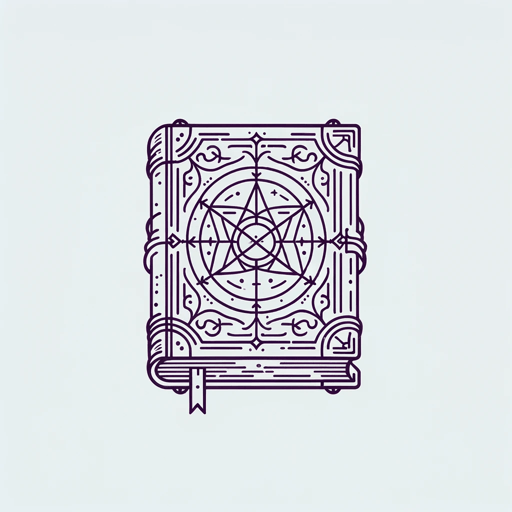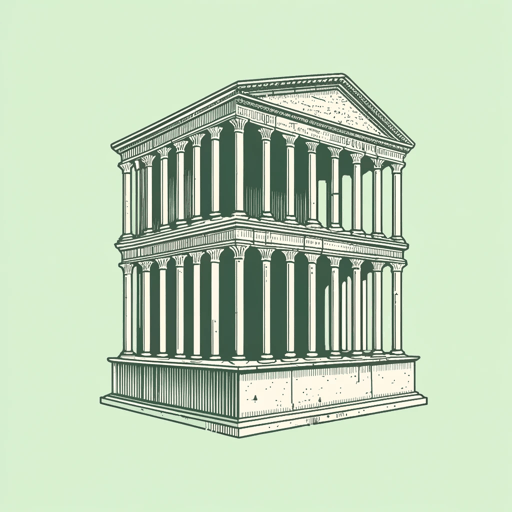27 pages • 54 minutes read
H. P. LovecraftThe Call of Cthulhu
Fiction | Short Story | Adult | Published in 1928A modern alternative to SparkNotes and CliffsNotes, SuperSummary offers high-quality Study Guides with detailed chapter summaries and analysis of major themes, characters, and more.
Summary and Study Guide
Summary: “The Call of Cthulhu”
American author H. P. Lovecraft‘s gothic horror story “The Call of Cthulhu” has become iconic for its depiction of the monster Cthulhu, one of Lovecraft’s so-called Eldritch Gods (or Eldritch Abominations), which have entered popular culture as a category of grotesque, otherworldly beings. Cthulhu in particular has become a fixture in fantasy, science fiction, and horror narratives. “The Call of Cthulhu” was originally published in the magazine Weird Tales in 1928 (vol. 11, no. 2), the edition followed in this guide.
Howard Phillips Lovecraft, born in Rhode Island in 1890, was not widely known in his time. He published his stories in pulp magazines and was considered an amateur rather than a professional writer. Only after his death in 1937 did critics revisit his work and deem it important to the development of 20th-century horror and science fiction. Lovecraft wrote several stories in which he developed what became known as the Cthulhu Mythos, with “The Call of Cthulhu” being the most famous.
“The Call of Cthulhu” is divided into three acts. The story takes place in Boston, Massachusetts, in 1928 and is written in the first-person past tense. The narrative presents itself as an essay found among the papers of the late Francis Wayland Thurston. Thurston opens his account by hinting at what he intends to describe: a “single glimpse of forbidden aeons which chills me when I think of it and maddens me when I dream of it” (160).
The first act is titled “The Horror in Clay.” Thurston presents himself as an archeologist who has been called to settle the estate of his great-uncle George Angell, who was a professor at Brown University specializing in ancient languages and inscriptions. Among his files, Thurston finds a box that contains a ceramic tablet bearing strange images and inscriptions. When Thurston realizes that the tablet was created recently, he surmises that someone tried to fool his uncle into believing it was an authentic artifact and decides to investigate its creator. He notes the depiction of an unusual monster that looks like a cross between an octopus, a dragon, and a human (161). Thurston discovers that the tablet was created by a young artist named Henry Anthony Wilcox, who saw the image and writing in his dreams. Thurston notes that Angell’s files connected with the tablet contain writings on mythology, theosophy, and secret societies.
Thurston learns that Wilcox had sought out his great uncle for help interpreting his dreams. After an earthquake on February 28, 1925, Wilcox began to dream of a “Cyclopean” city with pillars covered in hieroglyphics and green ooze. He heard the sounds “Cthulhu fhtagn” and “R’lyeh,” which gave him a feeling of terror (163). Angell became enthralled with Wilcox’s descriptions and began to consult with him daily. On March 23, 1925, Wilcox became fevered and delirious, repeating things about the shapeless monster and city from his dreams. On April 2, Wilcox recovered from his illness and had no recollection of the previous week. His dreams returned to normal, and Angell ended their association.
Angell’s documents show that he recorded others’ dreams during that week, and many artists and poets described visions like Wilcox’s. One man, an architect, had such disturbing dreams that he went insane and died. Thurston finds newspaper clippings from all over the world that describe heightened cult activity and uncanny occurrences during the same time.
The second act is titled “The Tale of Inspector Legrasse.” Among his uncle’s papers, Thurston reads of an incident in 1908 when a police inspector named Legrasse brought a statuette to the annual conference of the American Archeological Society seeking information on its origin. Legrasse recovered the carved statue during a police raid on a cultic ritual in the swamps of Louisiana. Legrasse wants to know the statue’s origin, hoping it might lead him to the cult’s headquarters.
The statuette, made of green and black stone, confounds the archeologists. It bears the same tentacled head, scaly winged body, and claws as Wilcox’s tablet, and none of the scholars can determine its origin. The statue is clearly ancient, but they cannot link the images to any known culture. Finally, a professor from Princeton University connects the statue with the “Eskimo” cult in Greenland that worshipped tornasuk, a demonic deity (167).
One of Legrasse’s prisoners, Old Castro, translated their cult’s ritual chant as “In his house at R’lyeh, dead Cthulhu waits dreaming”; Webb now believes the chant is connected with the cult in Greenland (168). The cult’s purpose, Castro said, was to wait until the stars align to release Cthulhu, one of the Old Ones, from his underwater grave to rule over the earth. The Old Ones would then plunge humanity into orgiastic chaos, which the cult believes is true liberation.
Despite the similarities between the statue and the tablet, Thurston suspects Wilcox is a charlatan and decides to visit him in Providence, Rhode Island, to verify his story. During their discussion, Wilcox convinces him of his sincerity. Thurston begins to believe that his uncle’s death was not an accident.
The third act is titled “The Madness from the Sea.” Thurston finds a newspaper article describing a man named Gustaf Johansen, who was found alone on a ship that had been abandoned by its crew near New Zealand. Johansen was delirious and held a statuette like the one found by Legrasse. He explained that his ship had been blown off course by a terrible storm (176-77). Johansen and his crewmates landed on a small, uncharted island, where most of the crewmembers died under mysterious circumstances.
The dates of the storm intrigue Thurston because they correspond to the earthquake in New England and Wilcox’s subsequent illness. He decides to travel to New Zealand, to visit Johansen to learn more about his experiences. He discovers that Johansen has moved to Norway with his wife, and he follows them there. In Norway, Thurston discovers that Johansen has died, leaving behind a manuscript written in English (287). After Johansen’s widow gives Thurston the manuscript, he learns the full horror of what Johansen experienced. It describes a city of slime-covered stone in which the geometry is non-Euclidean. The crew accidentally releases Cthulhu from his underground vault, and he kills and eats most of them. Johansen and his mate Briden are the only ones to escape, but Briden goes insane and dies, leaving Johansen as the sole survivor.
After reading Johansen’s account, Thurston is horrified. He considers publishing his findings on the Cthulhu Cult in archeological journals, but he decides that it is better to keep the whole affair secret as the island city that Johansen encountered has not been found by investigators. Nonetheless, while Angell and Johansen appear to have died from natural causes, Thurston is convinced they were killed by the Cthulhu Cult and believes he will be the next victim. He collects the papers and writes an account of the Cthulhu story, hoping that whoever finds the manuscript after his death has the good judgment to keep it hidden.
Related Titles
By H. P. Lovecraft





